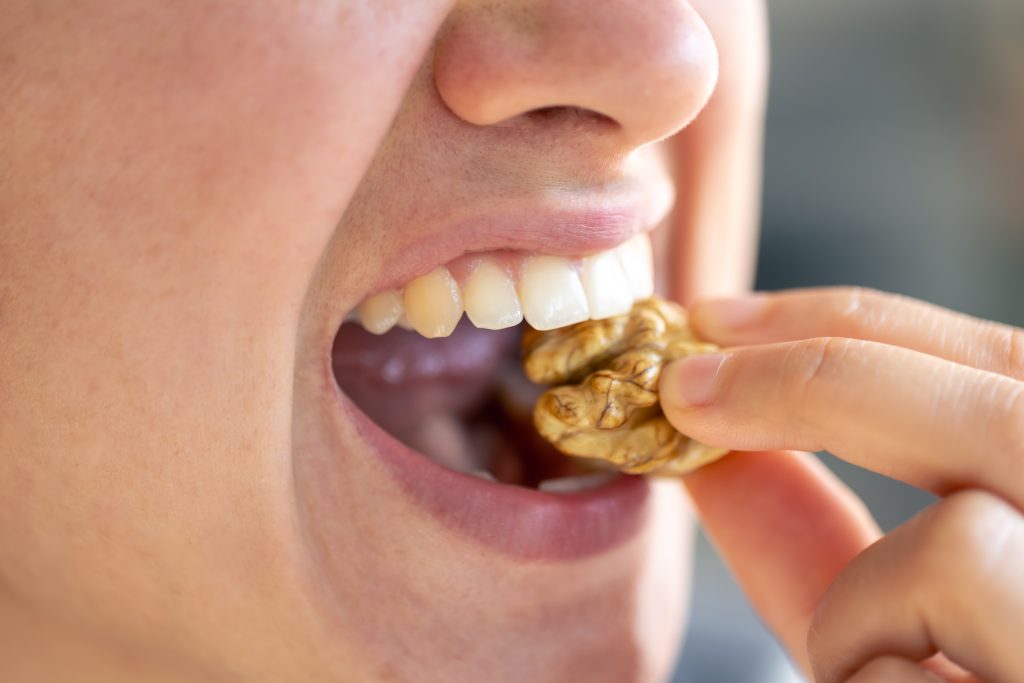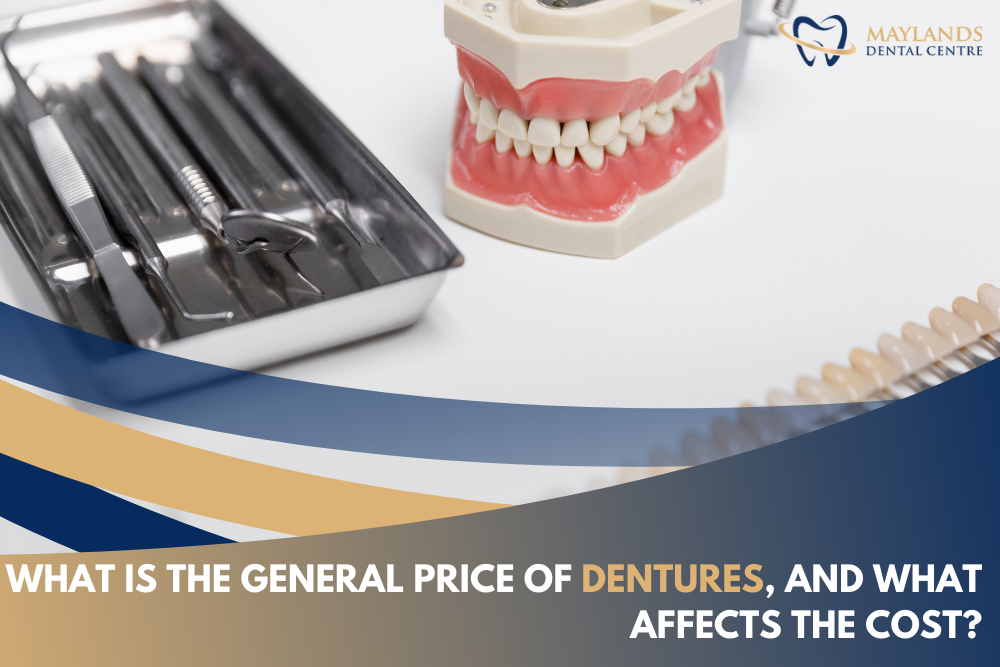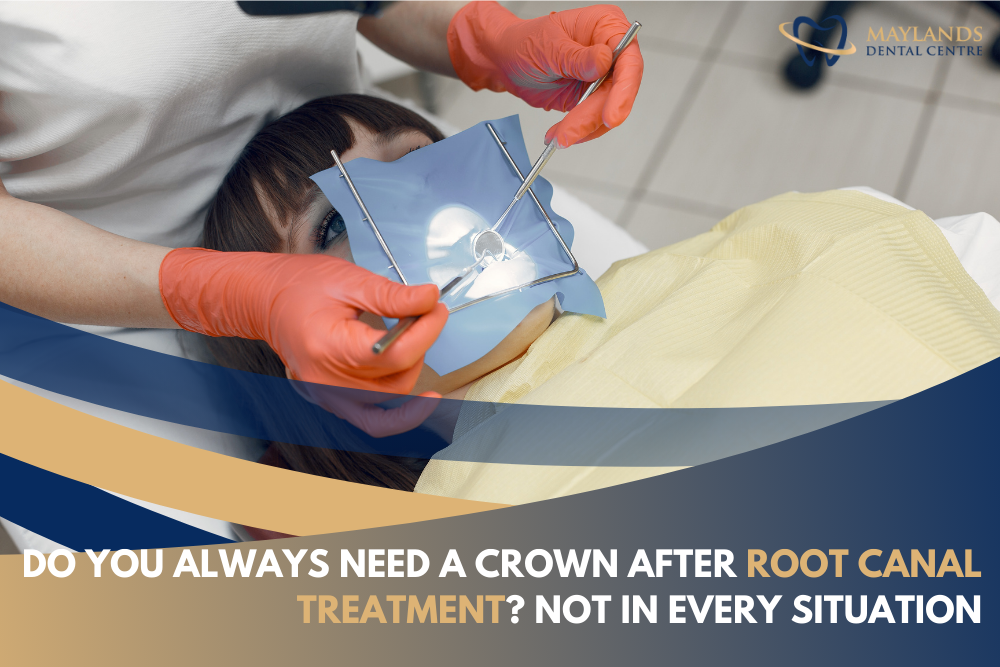Your gums play an essential role in maintaining your overall oral health and well-being. Changes in gum colour often signal that something may be wrong with your dental health. Healthy gums are pink and firm, but unhealthy gums may appear red, white, grey, or dark. In this article, you’ll learn what these colour changes could mean and when to seek dental advice.
Recognising gum colour changes early can help you address potential issues before they become serious. We’ll explore what healthy gums should look like and explain the possible causes of unhealthy gum colours. You’ll also learn about other signs of gum disease and the importance of professional dental assessments. This educational guide may help you feel more confident in recognising when something might not be normal.
Please remember that this information is general and does not replace a consultation with your dental professional. Only a qualified dentist can assess your gums properly and provide an accurate diagnosis and treatment options. If you notice persistent changes in your gum colour or texture, book a dental checkup as soon as possible. By understanding the colour of unhealthy gums, you can take proactive steps to protect your oral health.
- Healthy gums are usually coral pink, visibly firm, and textured like orange peel.
- Normal variations include brown or dark gums in people with more melanin. These differences are typically not signs of gum disease.
- Gums that appear red or dark pink may suggest inflammation. This could be an early sign of gingivitis or plaque buildup.
- White or pale gums may indicate anaemia, oral thrush, or leukoplakia. A dental professional should assess these changes.
- Grey gums might result from smoking, medications, or dental restorations. If colour changes appear suddenly, visit your dentist.
- Brown or dark gum patches may be harmless or a sign of concern. New or irregular changes should be examined promptly.
- Other signs of gum disease include bleeding, swelling, bad breath, and gum recession. These symptoms often occur with colour changes.
- Early professional care helps prevent serious gum issues. Regular dental visits and good hygiene protect long-term oral health.
What Healthy Gums Look Like

Recognising the healthy appearance of your gums is a vital part of monitoring your oral health. Here’s what healthy gums look like, along with variations that are completely normal across different individuals:
- Healthy gum appearance is coral pink in colour and has a firm texture when they are clean and well-maintained. In people with more melanin, healthy gums can naturally appear brown, dark purple, or even black.
- The texture of healthy gums resembles that of an orange peel, known as stippling, which indicates firm, well-attached gum tissue.
- Healthy gums fit snugly around each tooth and form a firm seal to support oral health. This seal helps protect the tooth roots and jawbone from harmful bacteria and debris.
- When brushing and flossing properly, healthy gums may show little to no bleeding. Occasional minor bleeding may occur when flossing is new or brushing is done too firmly. This usually subsides with gentle, consistent care.
- The appearance of healthy gums may change with age due to natural differences in gum texture and development. Children often have smoother gums, while adults show more defined stippling on the gum surface.
- It’s important to recognise that gum colour and texture naturally differ due to genetic and ethnic factors. These differences do not always indicate oral health problems.
You can feel more confident about your oral health by learning what healthy gums should look like. This knowledge helps you recognise normal changes and know when to seek advice from a dental professional.
Common Unhealthy Gum Colours and What They Mean
Patients often ask, “What is the colour of unhealthy gums?” when they notice unusual changes in their gum appearance. Noticing changes in your gum colour can be an early warning sign of underlying oral health issues. In this section, we’ll explain what different unhealthy gum colours may indicate and why early assessment matters.
Red or Dark Pink Gums
Red or dark pink gums are often the body’s way of signalling the early stages of gum inflammation. When caught early, these changes are manageable with improved oral care and professional support. Here’s a breakdown of what red or dark pink gums might mean:
- Early Sign of Inflammation:
Bright red or dark pink gums often indicate mild gum disease, a stage of inflammation caused by plaque buildup. - Plaque Buildup Is a Key Trigger:
The most frequent cause is plaque accumulation along the gumline, which results from inadequate brushing and flossing. - Hormonal Changes Increase Gum Sensitivity:
Fluctuations in hormones—such as during puberty, pregnancy, or menopause—can make gums more prone to inflammation. - Symptoms Often Include Tenderness and Bleeding:
You may experience bleeding gums during brushing or flossing or mild swelling in the affected areas. - Additional Warning Signs May Occur:
Persistent bad breath or an unusual taste in your mouth can also accompany gingivitis and should not be ignored. - Condition Is Reversible:
With consistent oral hygiene and regular dental checkups, gingivitis can often be reversed before it progresses. - Prompt Attention Prevents Progression:
If not managed, gingivitis can progress to more severe gum disease (periodontitis), which may require complex treatment. - When to Seek Dental Advice:
If your gums stay red, swollen, or tender for several days, it may indicate early gum disease. You should consult your dentist promptly for a professional assessment and personalised care plan.
Recognising red or dark pink gums early helps you take action before more serious gum issues can develop. Prompt dental care and improved oral hygiene can often restore gum health and prevent the need for complex treatment.
White or Pale Gums
White or pale gums can signal changes in oral or general health and may indicate underlying conditions that require attention. Below are the key reasons gums may appear pale or white, along with what they could mean:
- Anaemia Can Cause Pale Gums:
When your body lacks enough healthy red blood cells, oxygen delivery to tissues—including the gums—can be reduced. This often results in gums that appear pale, especially when accompanied by symptoms like fatigue or shortness of breath. A blood test by your general practitioner can confirm if anaemia is the cause. - Leukoplakia May Appear as White Patches:
Leukoplakia presents as thick, white patches on the gums, inner cheeks, or tongue. These patches cannot be scraped off and may be linked to tobacco use or irritation. While most cases are benign, some can be precancerous, so early professional evaluation is essential. - Oral Thrush Creates a White, Coated Appearance:
Oral candidiasis, or oral thrush, is a fungal infection that causes creamy white patches in the mouth. It commonly affects the gums, tongue, or palate and may require antifungal treatment. It is more common in individuals who use inhaled corticosteroids, wear dentures, or have weakened immune systems. Treatment involves antifungal medication prescribed by a healthcare provider. - Hormonal Fluctuations and Medications May Affect Gum Colour:
Certain medications, like chemotherapy or oral contraceptives, may cause temporary changes in gum colour, including paleness. Hormonal changes during pregnancy or menopause can also affect blood flow to the gums, making them appear lighter than usual. These changes are usually temporary but should still be discussed with a dental or medical professional. - Pale Gums Can Be a Clue to Systemic Health Conditions:
Pale gums may be an early visible sign of an underlying health condition, like a nutritional deficiency. Bone marrow disorders can also cause noticeable changes in gum colour. If your gums remain pale despite good oral hygiene, a dentist may recommend a medical review to explore systemic causes.
If you notice that your gums are white or pale, it is important to speak with your dentist. Early assessment can help manage more serious conditions and maintain good oral and overall health.
Grey Gums and What They Tell Us
Grey gums can be a concerning change in oral appearance and may signal a range of underlying causes. Below is a breakdown of what grey gum discolouration may indicate:
- Smoking-Related Tissue Changes:
Long-term tobacco use may cause smokers’ melanosis, a condition where the gums develop a grey or bluish tint. This occurs because smoking stimulates increased melanin production in the gum tissues over time. The discolouration appears gradually and is more common in the anterior lower jaw. It is harmless but can mask early signs of gum disease. - Medication-Induced Discolouration:
Certain medications can affect gum colour. For example, minocycline may cause pigmentation changes when used to address acne or rheumatoid arthritis. The drug binds to collagen and gradually builds up in gum tissues over time. This accumulation may cause grey or bluish-grey discolouration near the gum line or around dental restorations. - Metallic Deposition from Dental Restorations:
Grey gums may occur due to the presence of metal-based dental restorations like amalgam fillings or metal crowns. Microscopic metal particles can sometimes leach into nearby gum tissues after dental work, creating a grey or bluish mark. This mark, known as an amalgam tattoo, is harmless and does not cause pain or require treatment. - Possible Signs of Systemic Health Issues:
Grey gum tissue may, in rare cases, indicate a systemic condition, such as argyria, caused by prolonged exposure to silver. Unlike localised pigmentation, systemic causes often affect larger areas and may include skin discolouration or other body-wide symptoms. - When to Seek Professional Assessment:
If gum discolouration appears suddenly or spreads quickly, it may indicate an underlying concern that needs attention. Consult a dental professional promptly if you also notice bleeding, swelling, tenderness, or other unusual symptoms in your gums. A dentist can assess if the grey gums result from harmless pigmentation or more serious underlying health concerns.
Grey gums can arise from a variety of local or systemic causes. A dental evaluation can help identify the underlying reason and determine if further medical care is necessary.
Brown Gums and Dark Gums: Normal Variation or Concern?
Brown or dark gums can be completely normal, especially in people with darker skin tones or mixed heritage. This natural pigmentation results from melanin and does not indicate disease or poor oral hygiene. Gum colour varies widely among healthy individuals and often remains consistent over time. Regular dental checkups help confirm that this pigmentation is harmless.
However, understanding the colour of unhealthy gums is essential when there are sudden changes in appearance. For instance, patchy or uneven darkening may suggest an underlying issue. Smoking is a frequent contributor to gum discolouration, as nicotine can trigger pigmentation changes. Additionally, certain medications—like minocycline or antimalarials—may cause gradual changes in gum colour that also affect surrounding oral tissues.
Rare causes, such as oral melanoma, may appear as dark gum patches with irregular shapes, uneven colours, or sudden changes. Any new pigmentation with unclear borders, bleeding, or pain should be evaluated promptly by a dentist. Dentists assess the area with clinical tools and may recommend a biopsy if needed.
Beyond Colour: Other Signs of Gum Disease and Gum Problems
Gum disease symptoms often appear through physical and visual signs that dentists use to assess oral health conditions. These signs—aside from changes in gum colour—may suggest early gum problems that require prompt, professional assessment and treatment.
- Occasional bleeding from vigorous brushing can be normal. However, frequent or spontaneous bleeding may indicate gingivitis or gum disease.
- Receding gumlines can make teeth appear longer and expose the tooth roots. Receding gums may result from periodontal disease, aggressive brushing, or teeth grinding over time. This condition can expose tooth roots, increasing sensitivity and the risk of decay beneath the gumline.
- Swelling or tenderness may indicate gum infection or inflammation. Acute swelling may result from a localised issue, such as an abscess, and typically requires prompt dental evaluation. Chronic gum tenderness can indicate an underlying periodontal disease, which a dental professional should assess to provide appropriate treatment.
- Persistent bad breath (halitosis) can be linked to gum disease. This condition often arises when bacteria accumulate in periodontal pockets, releasing odorous compounds that regular brushing and mouthwash cannot address.
Noticing these symptoms early and seeking timely care can significantly improve treatment outcomes and maintain long-term oral health.
When to See a Dentist About Your Gum Colour
Changes in gum colour can be a warning sign of underlying oral or general health concerns. Knowing when to seek professional dental advice can help you address issues early, avoid complications, and protect your overall well-being.
- Persistent Redness or Swelling:
If you notice persistent tenderness, redness, or swollen gums, it could be an early sign of gum inflammation. Early gum inflammation, such as gingivitis, often requires timely dental care to prevent progression. A dentist can assess inflammation levels and recommend personalised care to reverse or manage the condition. - Bleeding That Occurs Frequently:
Gums that bleed frequently during brushing or flossing may indicate plaque buildup or an infection. Occasional bleeding can be normal, but regular bleeding is a reason to see your dentist for a gum health evaluation. - Gum Colour Changes Without a Clear Cause:
If your gums change to a white, grey, or dark colour, it may indicate an underlying issue that requires attention. You should see a dentist if you notice irregular patches without an obvious cause, like medication or recent dental work. Some colour changes can signal conditions such as leukoplakia, oral thrush, or systemic health issues like anaemia. - Receding Gums or Longer-Looking Teeth:
Gum recession exposes the tooth roots and may cause sensitivity or increase your risk of decay. A dental checkup can identify the cause and prevent further loss of gum tissue. - Pain, Sensitivity, or Loose Teeth:
Painful, sensitive, or loose teeth may result from advanced gum disease, which affects the supporting structures of the teeth. Early dental intervention can improve comfort and help stabilise your oral health.
What to Expect During a Gum Health Check
During your dental appointment, the dentist may:
- They measure gum pocket depths to check for early signs of disease.
- Examine for bleeding, inflammation, or unusual pigmentation.
- Discuss any related health history or medications. These assessments are quick, non-invasive, and designed to support accurate diagnosis and personalised care recommendations.
Visiting your dentist at the first sign of unusual gum changes can lead to more effective and less invasive treatment. Early care not only protects your oral health but also supports your overall well-being.
How to Keep Your Gums Healthy
Maintaining healthy gums is essential for preserving overall oral health and preventing gum disease. Below are evidence-based strategies that support optimal gum health:
- Use Gentle Brushing Techniques:
Brushing twice daily with a soft-bristled toothbrush using gentle, circular motions helps remove plaque without damaging the gum tissue. - Floss Daily Using Proper Technique:
Floss once daily by curving it in a “C” shape around each tooth to clean areas your toothbrush misses. This technique helps remove plaque between teeth and reduces the risk of gum inflammation. - Attend Regular Dental Checkups:
Visit your dentist every 6–12 months so they can detect early gum issues before they become more serious. Professional cleaning removes tartar that brushing and flossing miss, helping maintain the health of your teeth and gums. - Eat a Gum-Friendly Diet:
Eating foods high in vitamin C, such as fruits and vegetables, helps maintain healthy gum tissue and supports tissue healing. Limiting sugary snacks can reduce plaque buildup and lower the risk of gum inflammation and related oral health problems. - Avoid Tobacco Products:
Smoking increases the risk of gum disease by reducing blood flow to the gums and weakening the body’s immune response. Quitting smoking promotes gum health by improving blood circulation and helping your body respond more effectively to oral infections. - Stay Hydrated Throughout the Day:
Drinking water stimulates saliva production, which naturally helps cleanse the mouth and maintain a healthy balance of oral bacteria. - Consider Evidence-Based Tools:
Incorporate antimicrobial mouthwashes or water flossers into your daily oral hygiene routine. These tools may help reduce plaque and support gum health when used properly. However, these products should not replace brushing and flossing as the foundation of daily gum care.
You can reduce your risk of gum disease by maintaining good daily oral hygiene habits and consistent dental checkups.
Final Thoughts
Dental emergencies can happen at any time and may involve pain, swelling, injury, or signs of infection. Responding calmly and seeking professional care quickly can make a difference in your comfort and long-term oral health.
Temporary steps such as rinsing with salt water or using a cold compress can help relieve pain and limit further irritation. However, these measures are not a replacement for a proper diagnosis and care by a dental professional. Early attention can help prevent symptoms from getting worse and may reduce the need for more involved procedures later on.
If you require urgent dental care, you can reach Maylands Dental Centre at (08) 9370 5464 or visit the clinic at 185 Guildford Rd, Maylands, WA 6051. A timely response can help manage discomfort and guide the next steps for your dental treatment.


 By Maylands Dental Centre
By Maylands Dental Centre 





 General Dentistry
General Dentistry Cosmetic Dentistry
Cosmetic Dentistry Restorative Dentistry
Restorative Dentistry Dental Implants
Dental Implants Orthodontics
Orthodontics Sleep Dentistry
Sleep Dentistry Childrens Dentist
Childrens Dentist Cosmetic Procedures
Cosmetic Procedures Health Funds
Health Funds Government Schemes
Government Schemes Payment Plan Options
Payment Plan Options